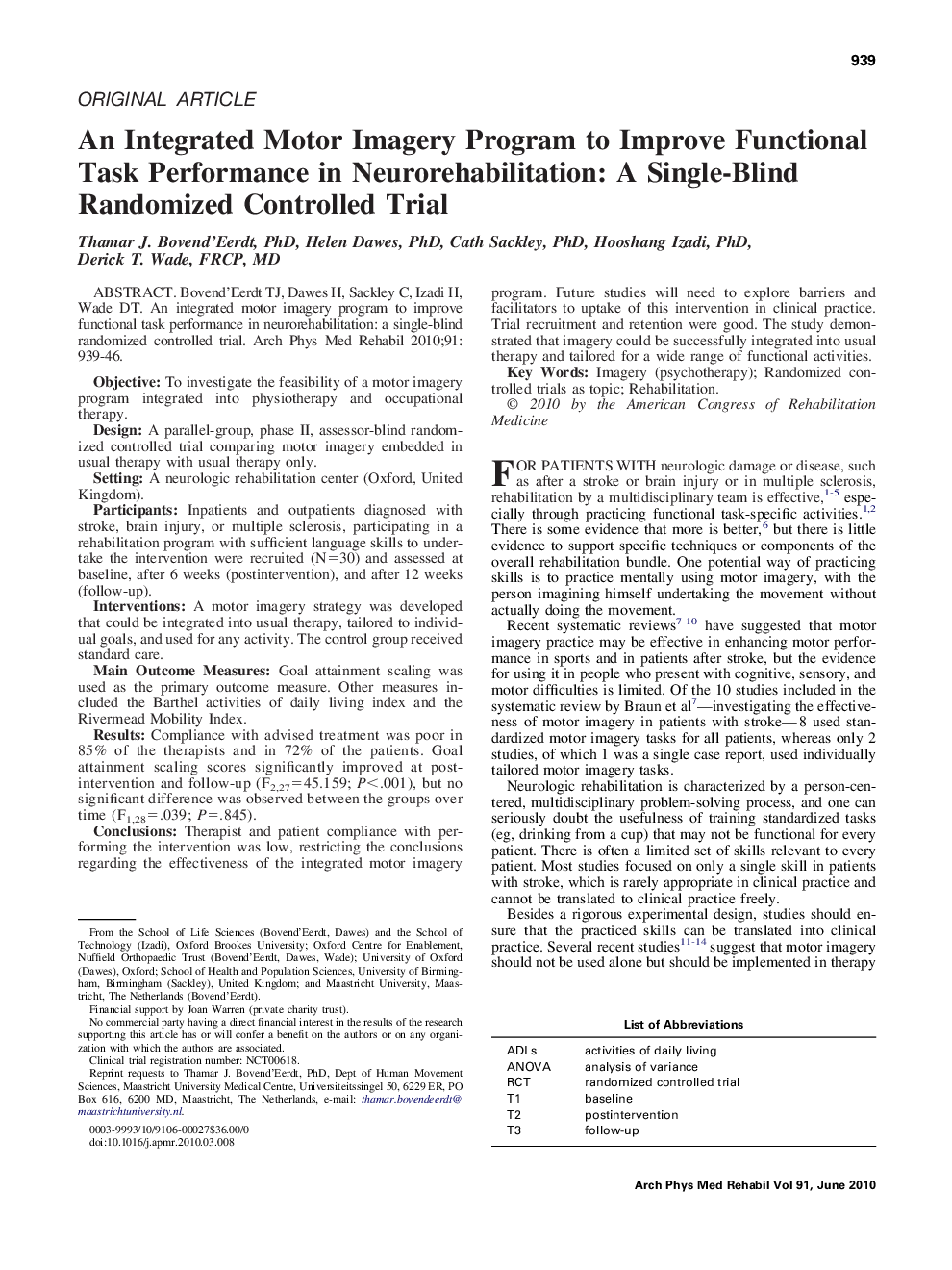| کد مقاله | کد نشریه | سال انتشار | مقاله انگلیسی | نسخه تمام متن |
|---|---|---|---|---|
| 3451157 | 1595752 | 2010 | 8 صفحه PDF | دانلود رایگان |

Bovend'Eerdt TJ, Dawes H, Sackley C, Izadi H, Wade DT. An integrated motor imagery program to improve functional task performance in neurorehabilitation: a single-blind randomized controlled trial.ObjectiveTo investigate the feasibility of a motor imagery program integrated into physiotherapy and occupational therapy.DesignA parallel-group, phase II, assessor-blind randomized controlled trial comparing motor imagery embedded in usual therapy with usual therapy only.SettingA neurologic rehabilitation center (Oxford, United Kingdom).ParticipantsInpatients and outpatients diagnosed with stroke, brain injury, or multiple sclerosis, participating in a rehabilitation program with sufficient language skills to undertake the intervention were recruited (N=30) and assessed at baseline, after 6 weeks (postintervention), and after 12 weeks (follow-up).InterventionsA motor imagery strategy was developed that could be integrated into usual therapy, tailored to individual goals, and used for any activity. The control group received standard care.Main Outcome MeasuresGoal attainment scaling was used as the primary outcome measure. Other measures included the Barthel activities of daily living index and the Rivermead Mobility Index.ResultsCompliance with advised treatment was poor in 85% of the therapists and in 72% of the patients. Goal attainment scaling scores significantly improved at postintervention and follow-up (F2,27=45.159; P<.001), but no significant difference was observed between the groups over time (F1,28=.039; P=.845).ConclusionsTherapist and patient compliance with performing the intervention was low, restricting the conclusions regarding the effectiveness of the integrated motor imagery program. Future studies will need to explore barriers and facilitators to uptake of this intervention in clinical practice. Trial recruitment and retention were good. The study demonstrated that imagery could be successfully integrated into usual therapy and tailored for a wide range of functional activities.
Journal: Archives of Physical Medicine and Rehabilitation - Volume 91, Issue 6, June 2010, Pages 939–946